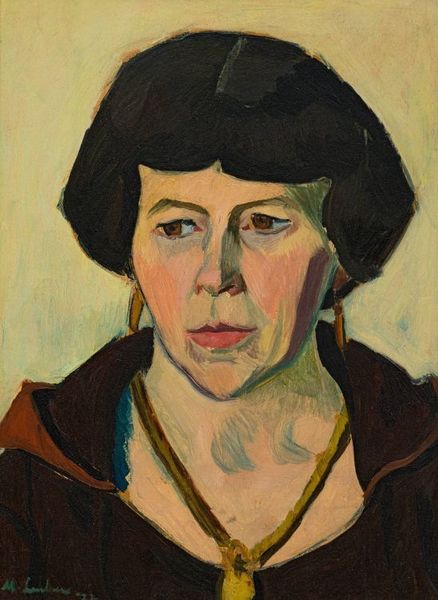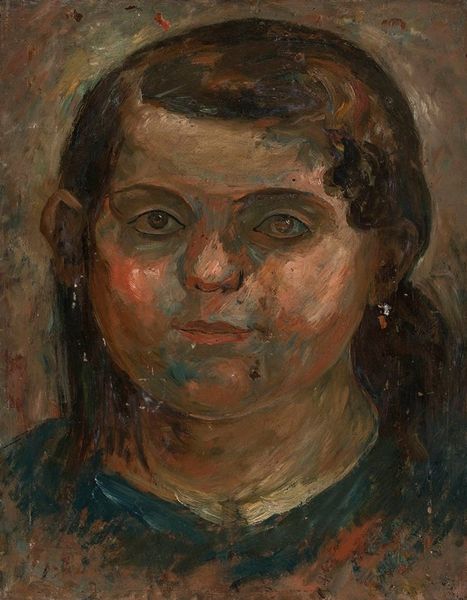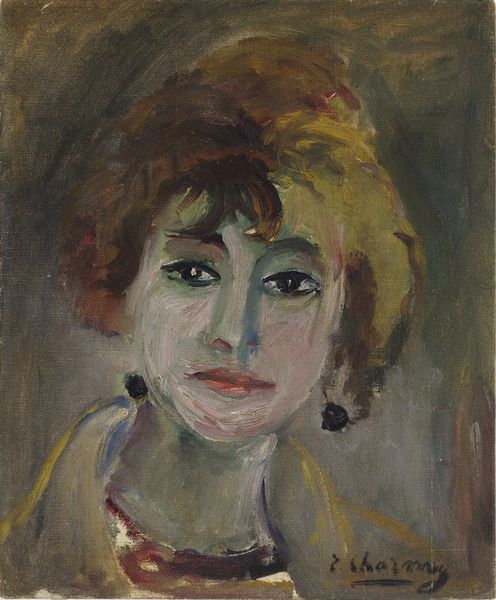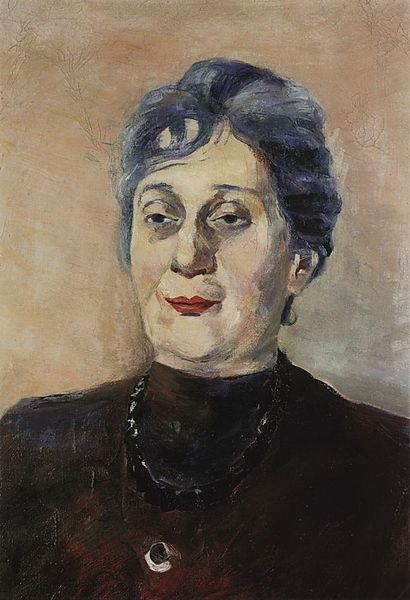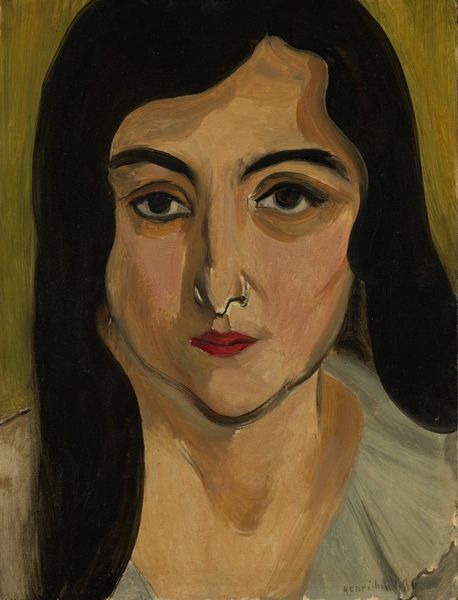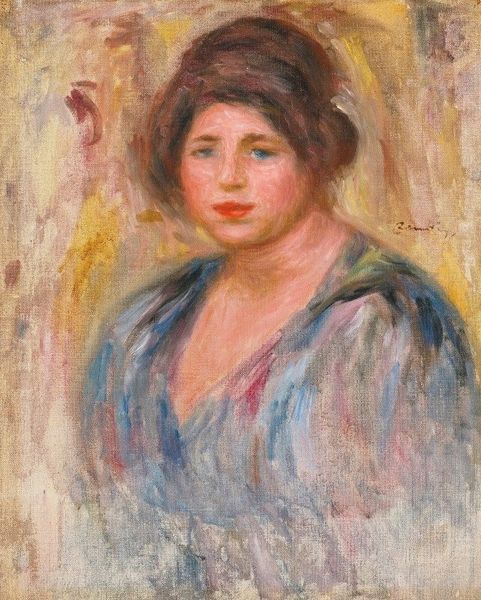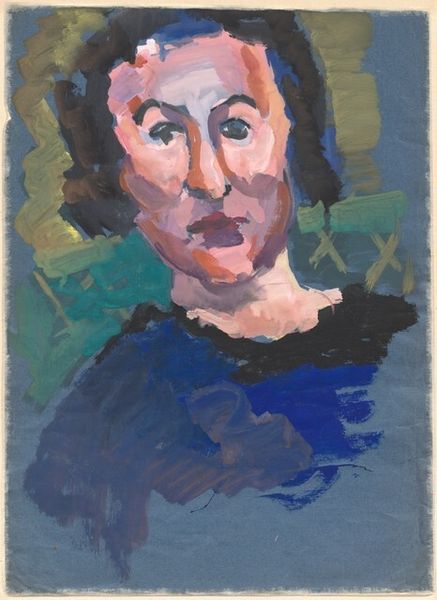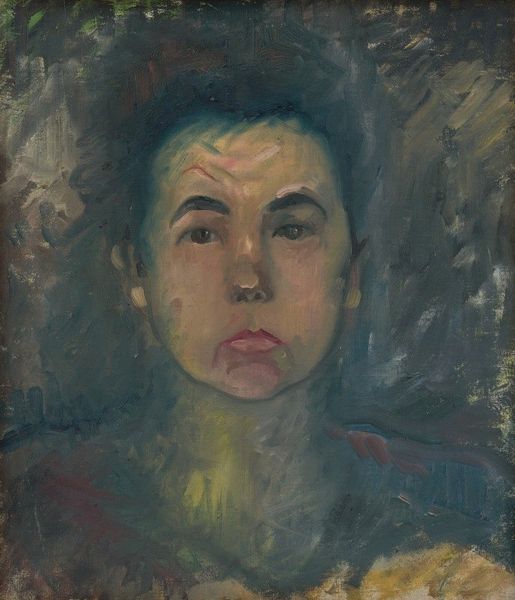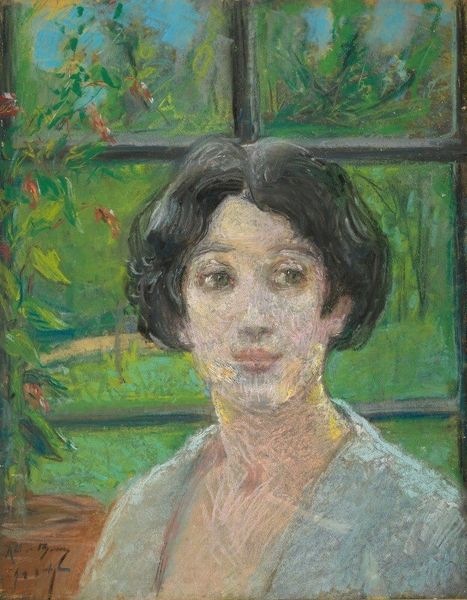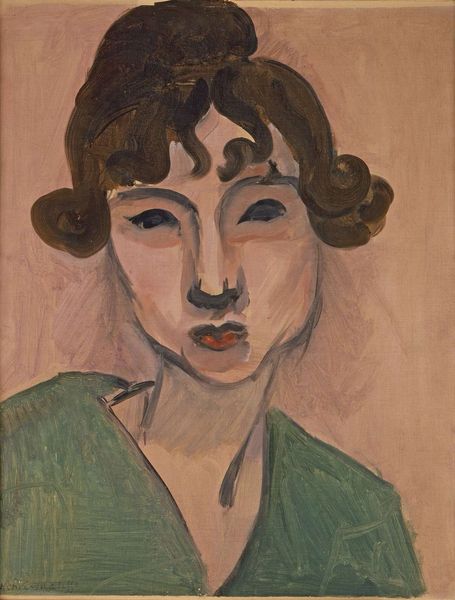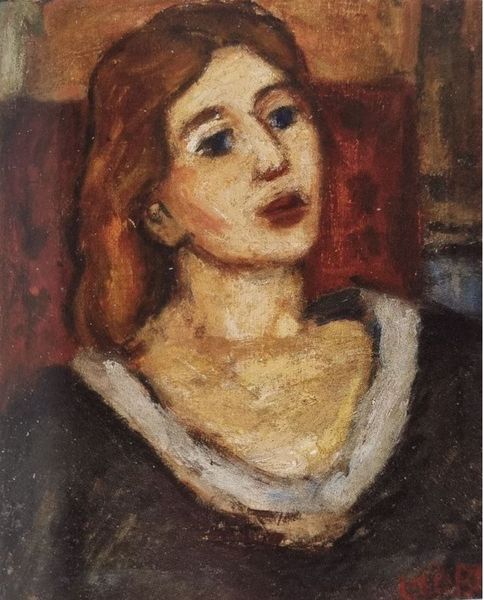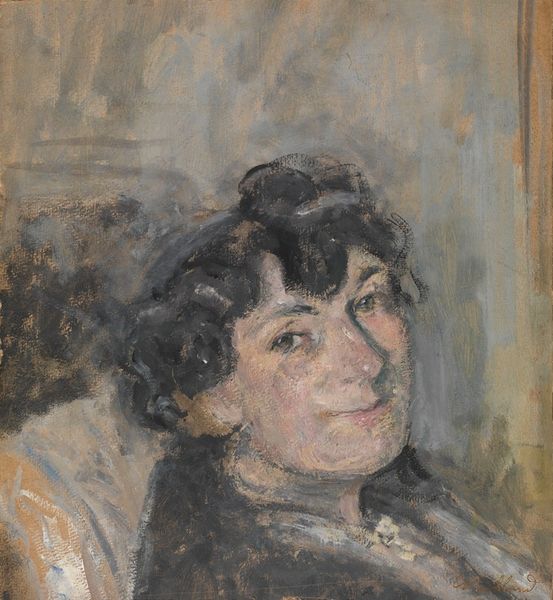
Dimensions: overall: 44.1 x 37.1 cm (17 3/8 x 14 5/8 in.)
Copyright: National Gallery of Art: CC0 1.0
Curator: Standing before us is "Head of Woman (Sonia Rothkowitz)," an oil painting crafted around 1932 by Mark Rothko. What are your initial thoughts? Editor: Immediately, the somber palette strikes me. The browns and muted greens create a gravity, an introspective mood that pervades the portrait. Rothko’s brushstrokes, though visible, blend subtly to evoke a sense of quiet realism. Curator: It’s interesting that you find it quiet. I see something else. Rothko, even in this early representational piece, is wrestling with emotional intensity. This image depicts his wife at the time, and this particular stage in his artistic career represents a transition for him. Considering Sonia's Jewish heritage, and their eventual immigration to the US during a period of immense social and political turmoil in Europe, this piece may symbolize displacement and anxiety about identity and belonging. Editor: While I understand the historical and biographical context that could inform your reading, I'm drawn to the pure formal elements at play. Note how Rothko models her face with light and shadow. There's a tension between the soft curves of her face and the more angular treatment of her jawline. This tension elevates the portrait beyond simple representation and introduces an element of… unease, perhaps? Curator: Perhaps, and that unease can also be extended to how women are represented in portraiture at the time. Are they allowed the full weight of personhood or is it merely a mask? We should also be careful to avoid reading solely into the surface representation. The woman’s direct gaze meets the viewer and challenges expected passivity, making one wonder, what were the dynamics between Sonia and Rothko at the time, who was looking and who was being looked at. Editor: Absolutely, there's a fascinating interplay of gazes implied through the composition and how they relate. We cannot disentangle the purely visual experience from considerations of the work's broader cultural and political milieu. Yet, at the same time, this work still resonates formally through his subtle articulation of color, light and texture. Curator: This Rothko portrait underscores that early modernism allowed some artists a chance to work through representation. Looking at a piece like this and viewing it through the prism of Rothko’s personal experiences alongside the historical background makes us think critically about art’s function as an object that speaks beyond what is materially visible. Editor: Agreed. Ultimately, through the application of expressive painting techniques to something that appears outwardly realistic and even reserved, Rothko created a compelling picture of the world as something intensely human, both viscerally real and deeply layered.
Comments
No comments
Be the first to comment and join the conversation on the ultimate creative platform.
